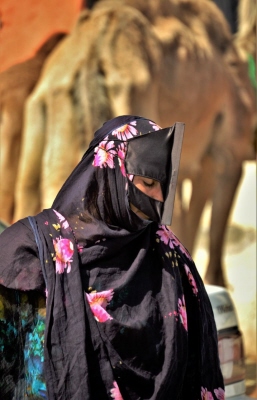 |
|
Photo Sinaw souq
|
Below your find photos of different Omani souqs / bazaars, traders and visitors taken between 1985 and 1995. We also found a couple of historic descriptions and illustrations of the souqs in Oman.
In 1672 a Dutch VOC ship visited Muscat and the Dutchman Padbrugge visited the Muscat souq. This visit was recorded in the ship's log that still resides in the National Archives in The Hague, this is probably the earliest description of an Omani souq. See Ref 1 (bottom of this page) for details. The description includes details about different interesting arts and crafts in the Muscat souq.
In 2014 a fine book about the Muttrah souq and the people working there for generations was published with the title "Throw down the anchor. The Story of the Muttrah souq" by Maxine Burden See Ref 2.
Around 1874 the American tourist Perry Fogg of Cleveland visited the Muscat souq and witnessed a person walking around the souq to auction off a sword. This method was still used in Nizwa in 1980's and possibly later (see photo below) For his very "colourful" description see Ref 4 at the end of this page. The introduction of his book Arabistan in 1875 mentions that Arabia has become accessible to tourists in the past few years.

Antiques Auctioneer in Nizwa souq, he walks constantly along shops seeking higher bids for his antique objects (typically guns, daggers and swords) from the shop owners. identical to the sword auctioneer described by American tourist Perry Fogg in the Muscat souq around 1875 (see picture below) !!


Nizwa old souq
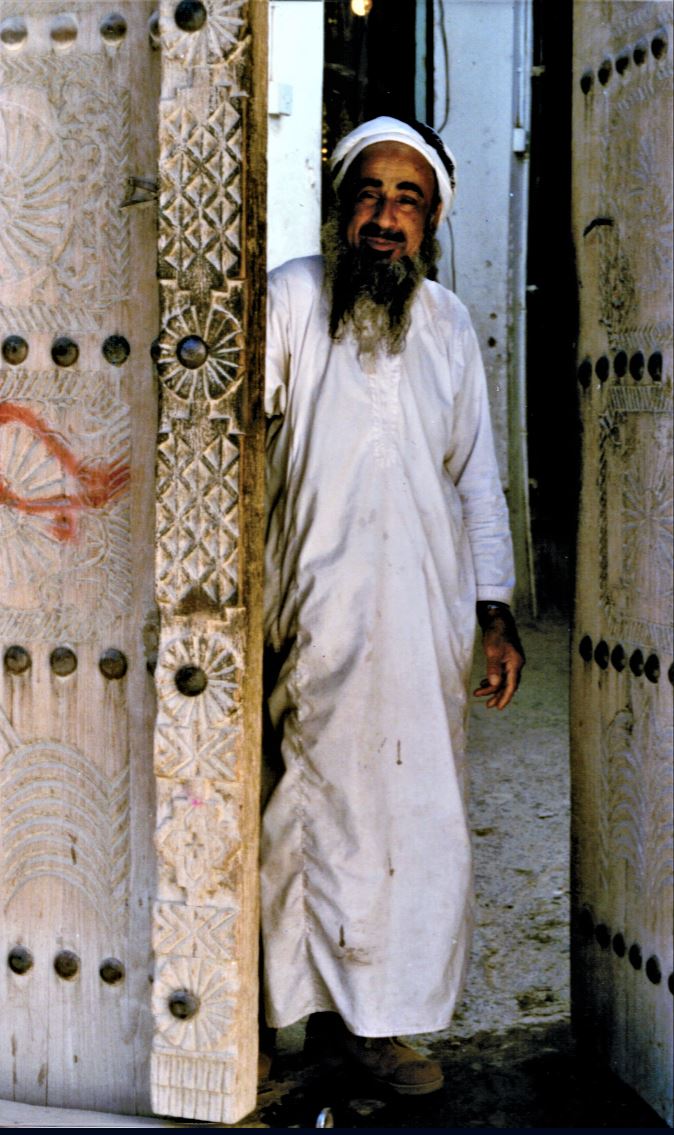
Nizwa old souq

Nizwa's ancient cattle / goat souq close to the fort
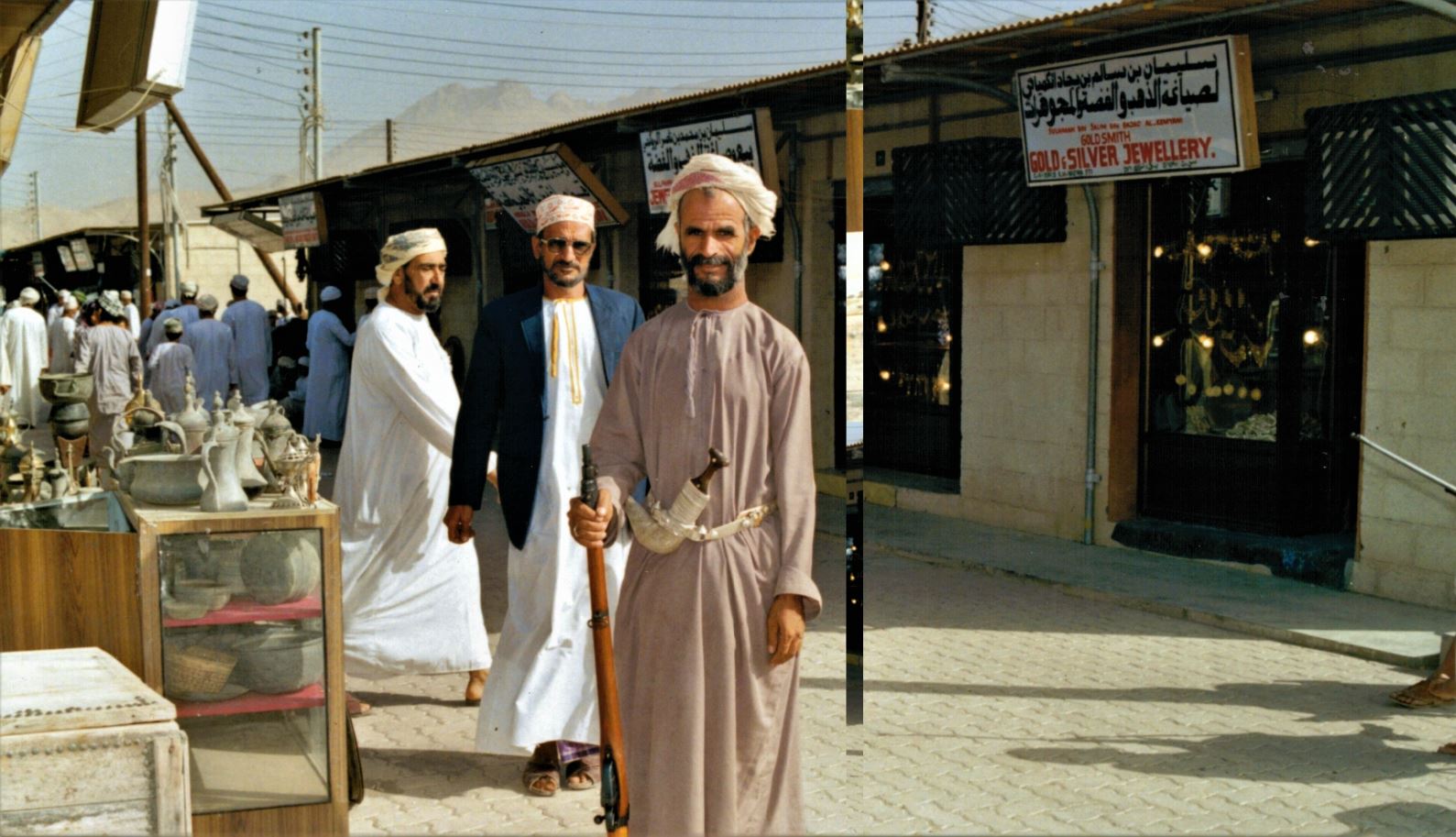
Nizwa temporary souq (during renovation old souq)
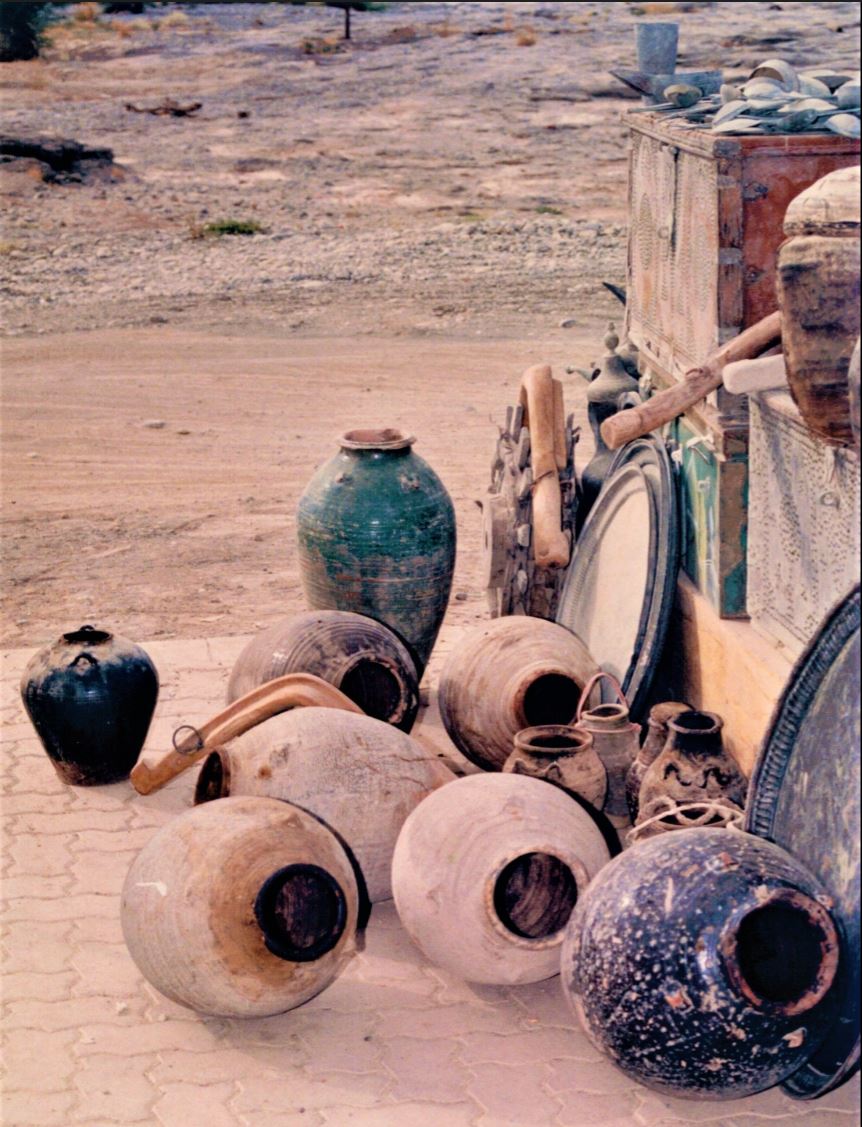
Nizwa temporary souq
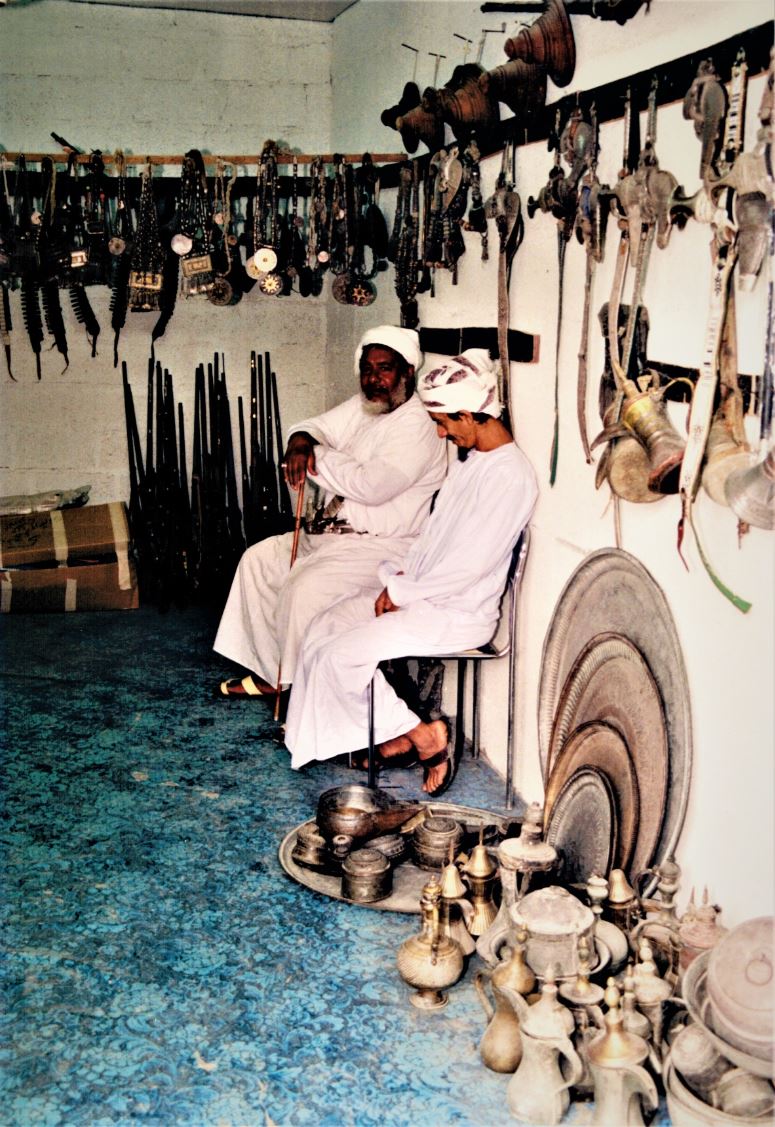
Nizwa temporary souq
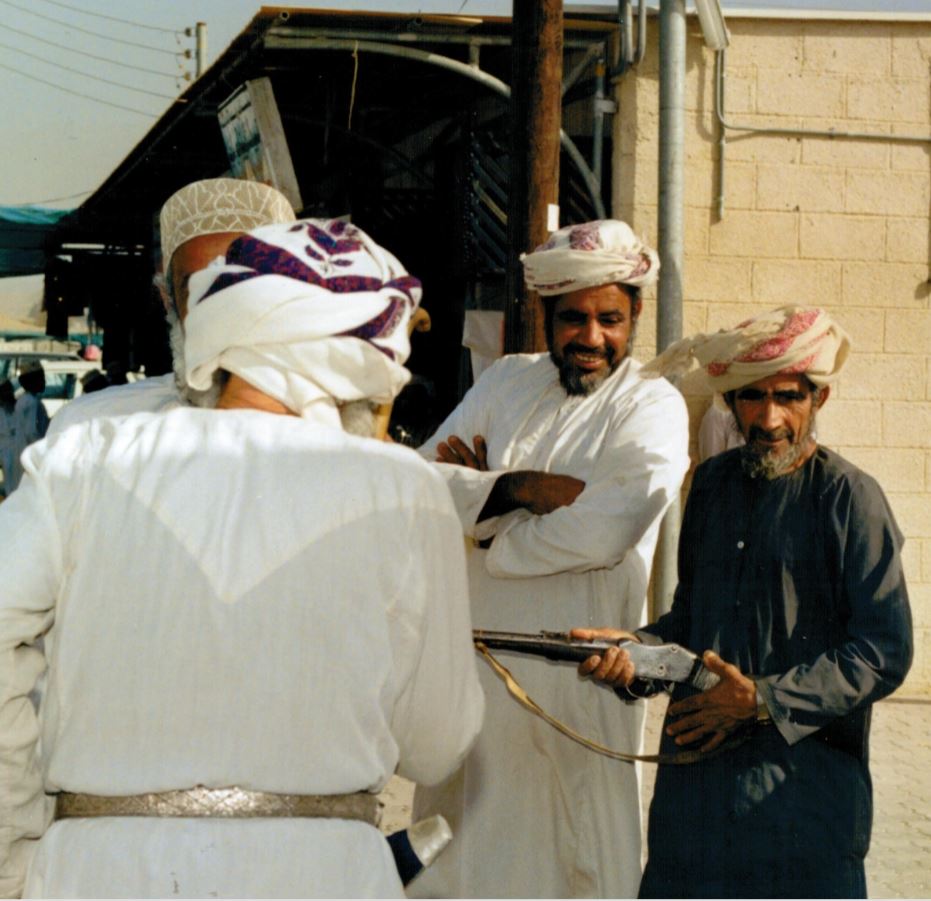
Nizwa temporary souq
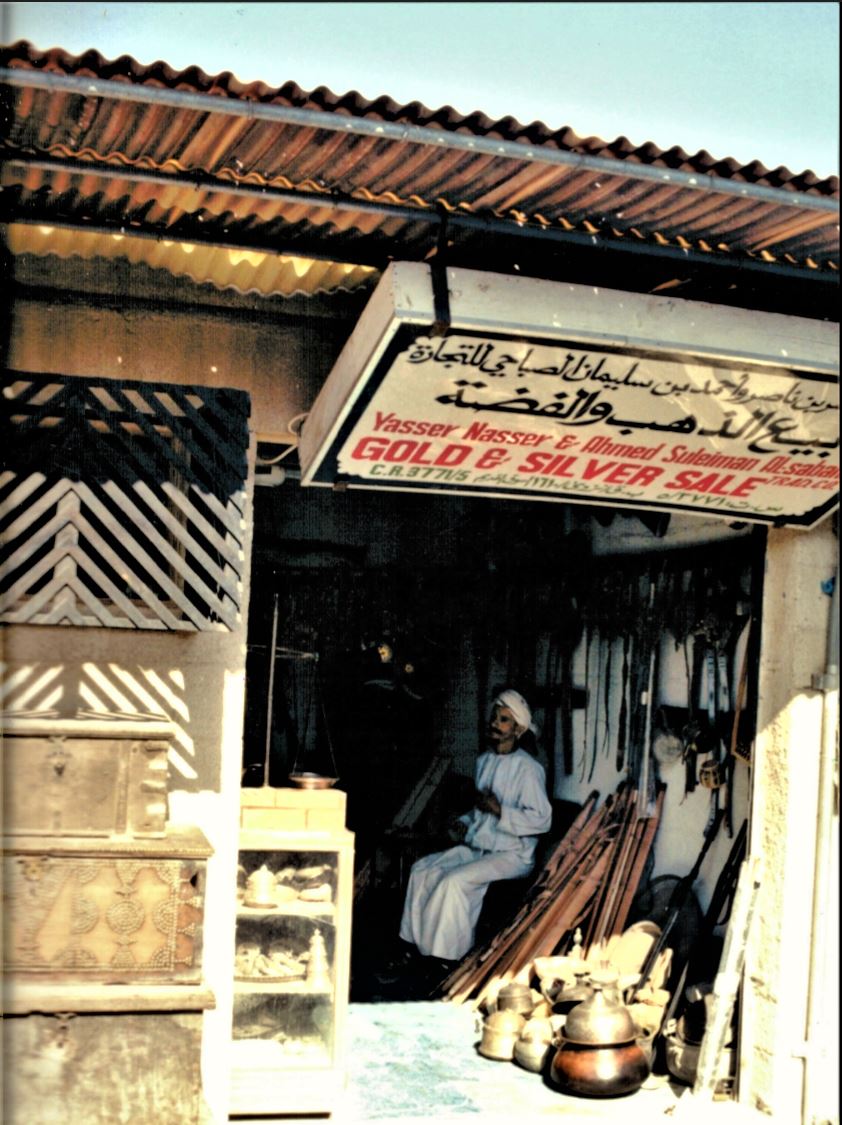
Nizwa temporary souq

Nizwa temporary souq

Nizwa souq

Renovated Nizwa souq
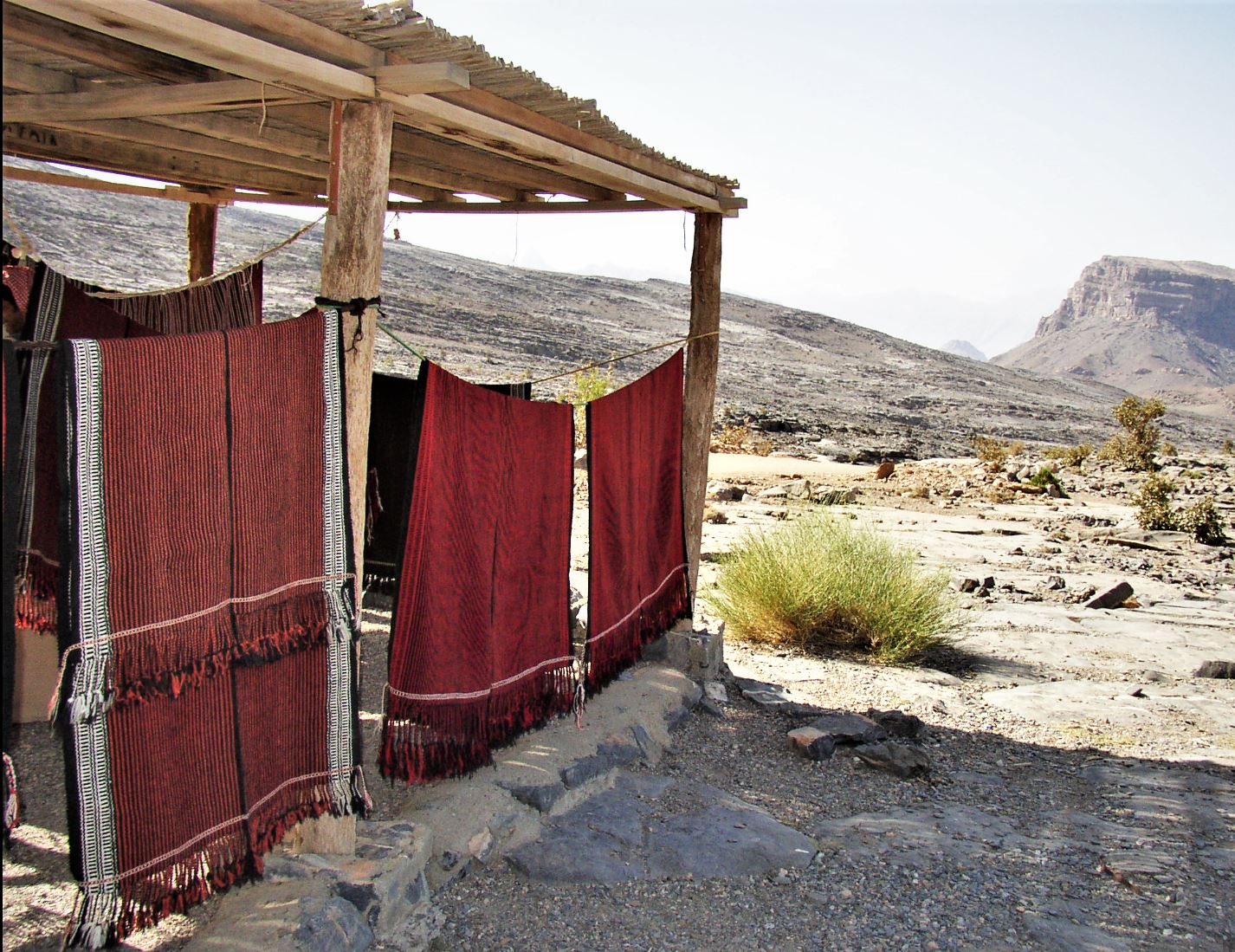
Locally produced camel cloths for sale on the Jebel Shams

Camel Cloths for sale on the Jebel Shams

Antique shop in Muttrah souq

Muttrah souq
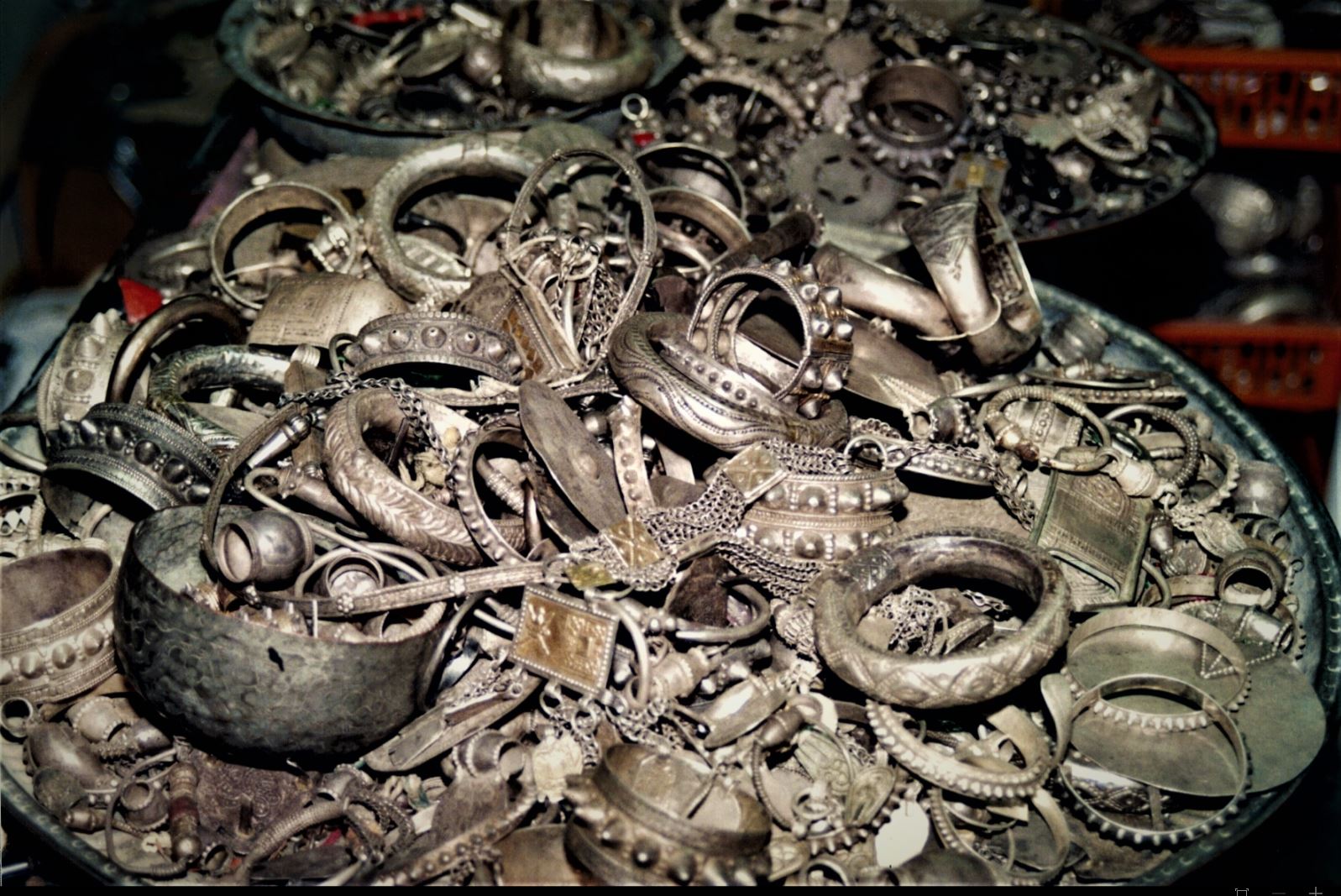
Muttrah souq

Muttrah souq

Muttrah souq

Muttrah souq Finding a souvenir

Muttrah souq

Muttrah Souq

Muttrah Souq in 1992 (photo front-cover PDO News)

Nizwa souq
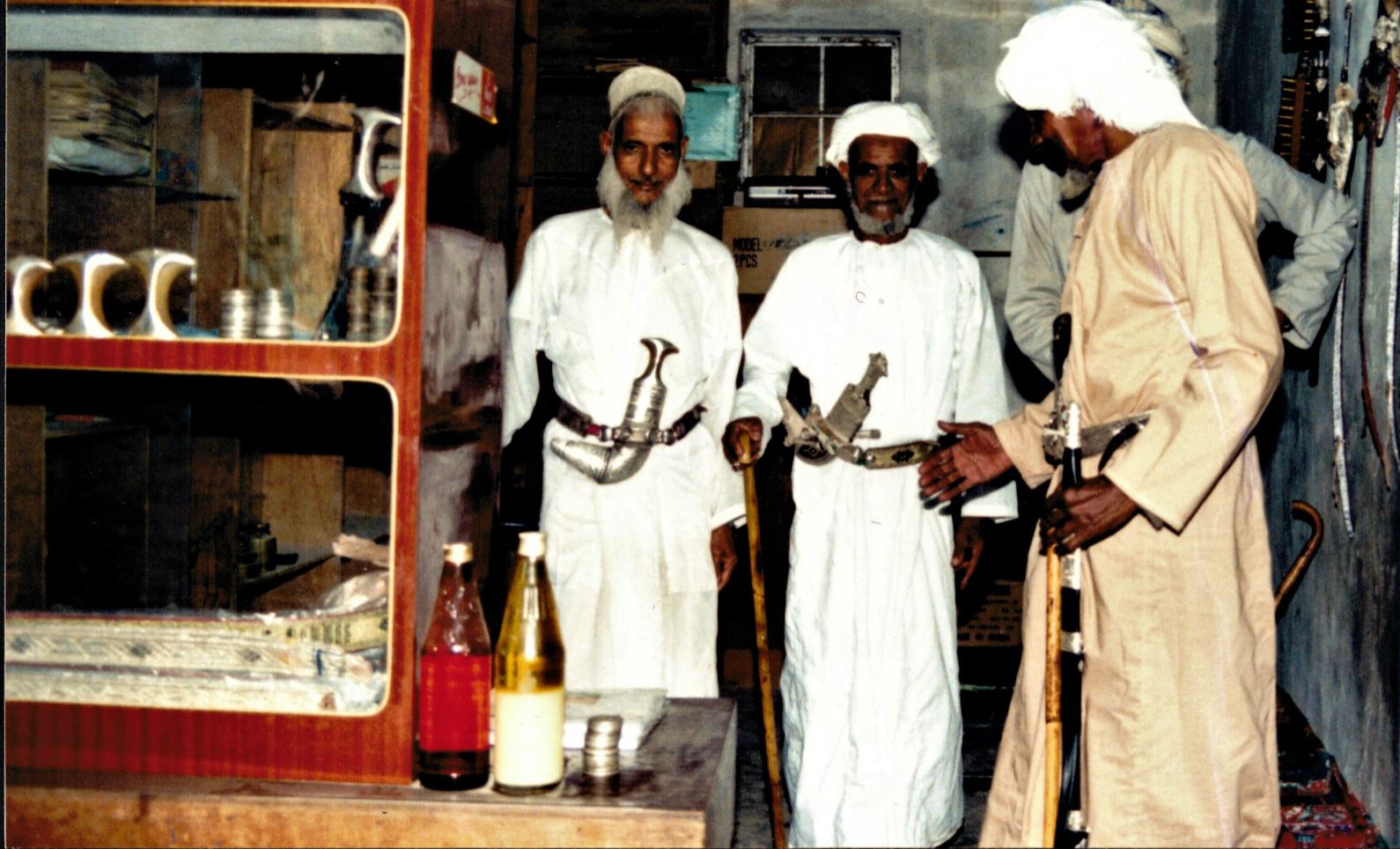
Rustaq souq

Smith in Rustaq souq

Smith in Rustaq souq

Tobacco dealer in Rustaq souq
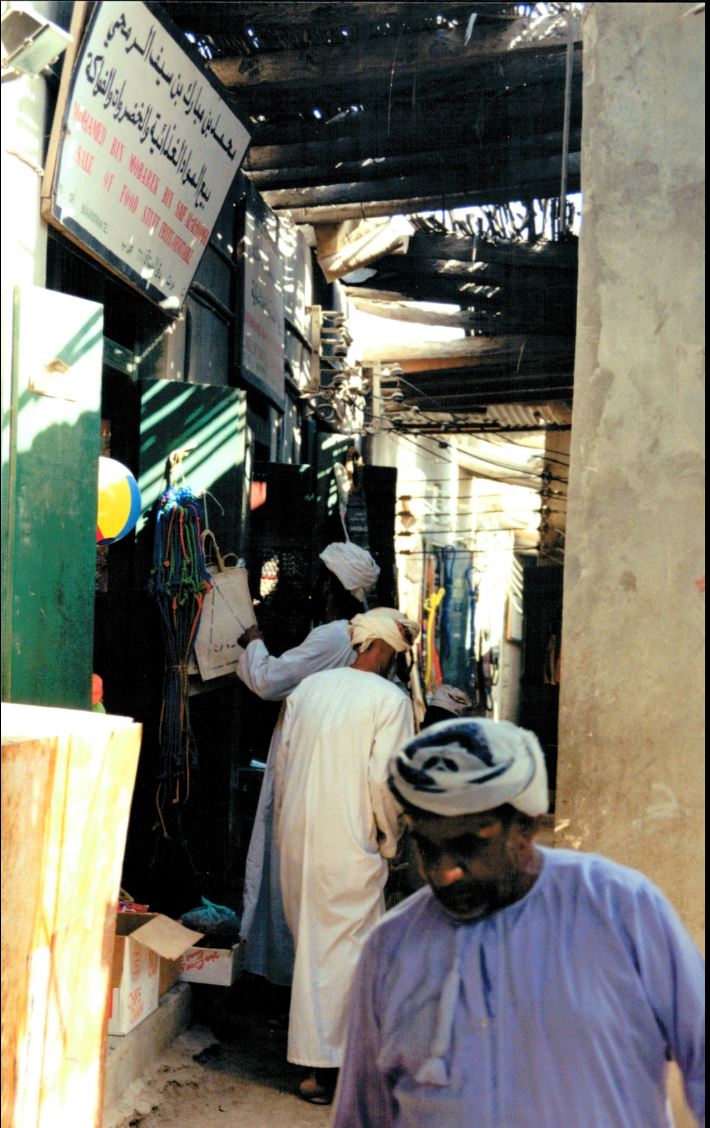
Rustaq souq

Khanjar sold in Sinaw Souq
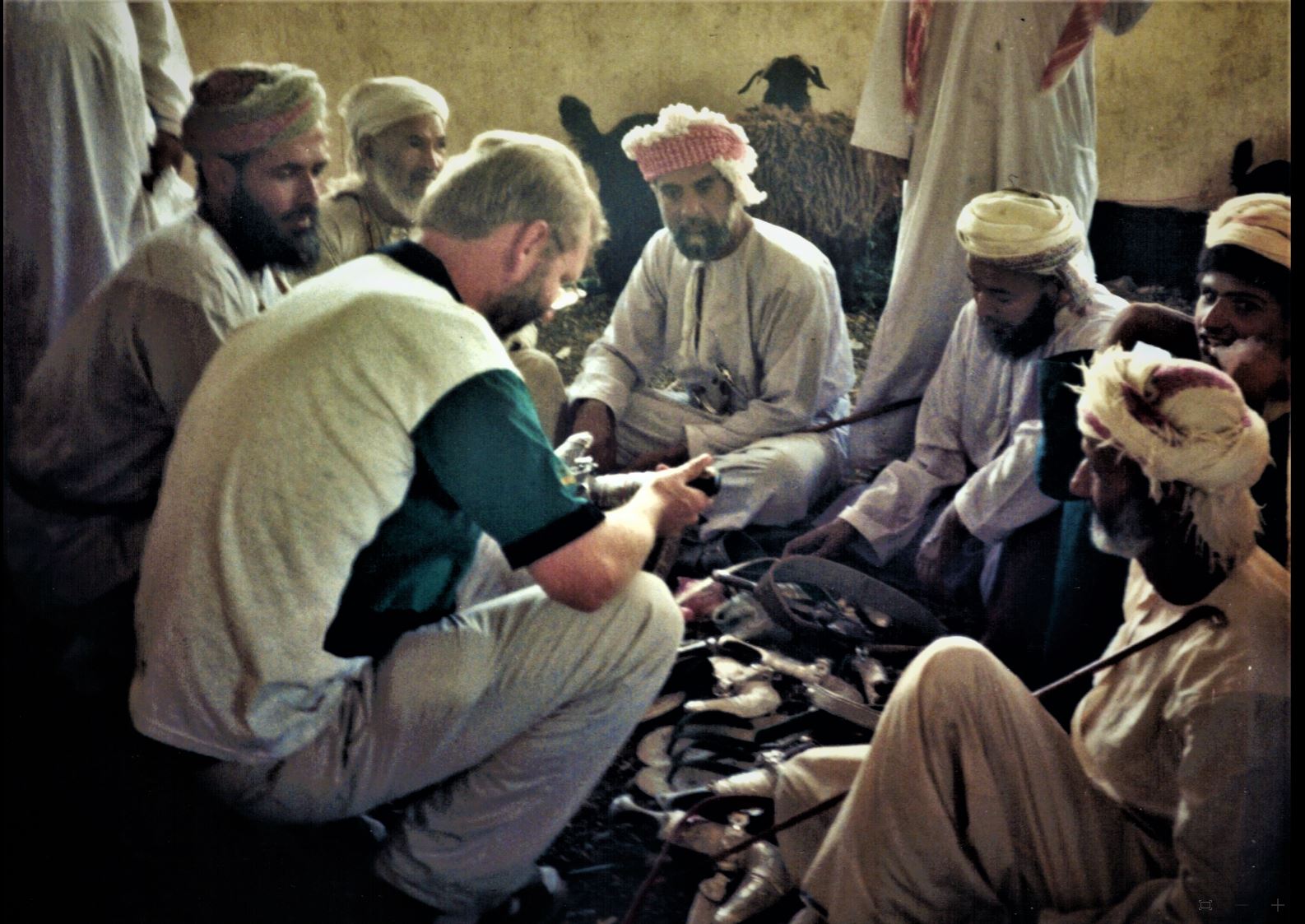
Plenty old khanjars for sale in Sinaw souq
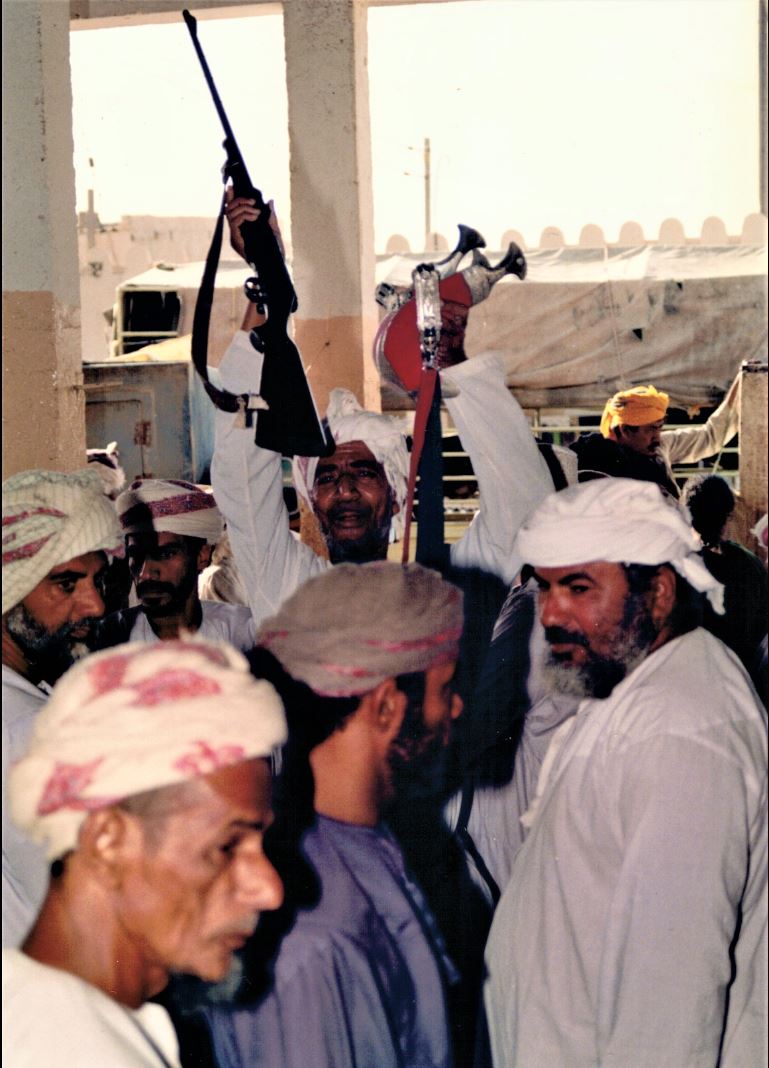
Sinaw souq, an auctioneer showing his goods
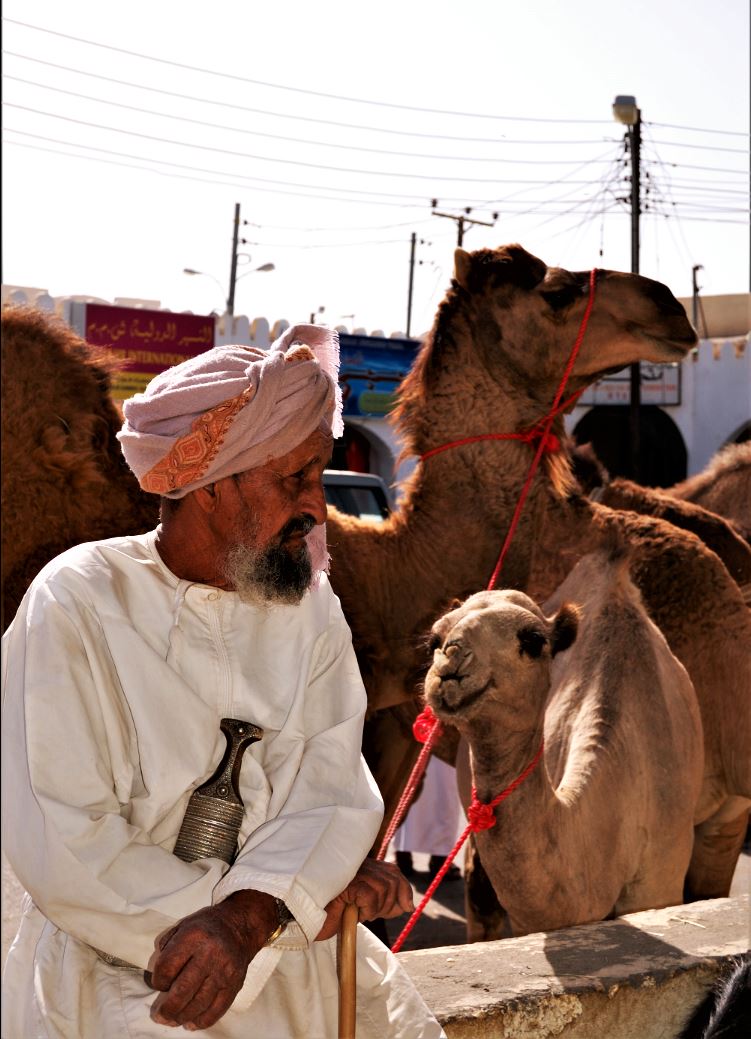
Sinaw Souq
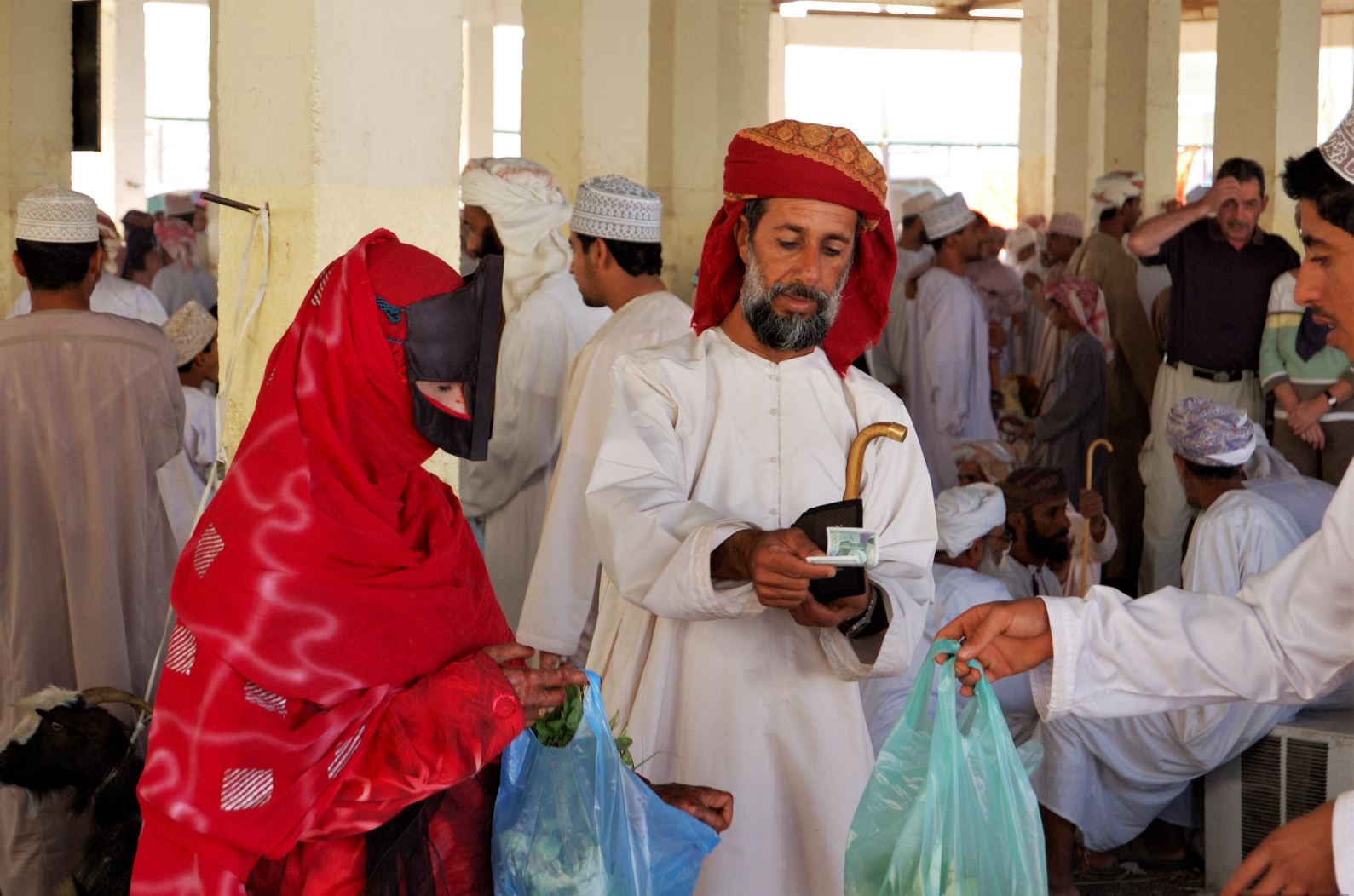 Sinaw Souq
Sinaw Souq
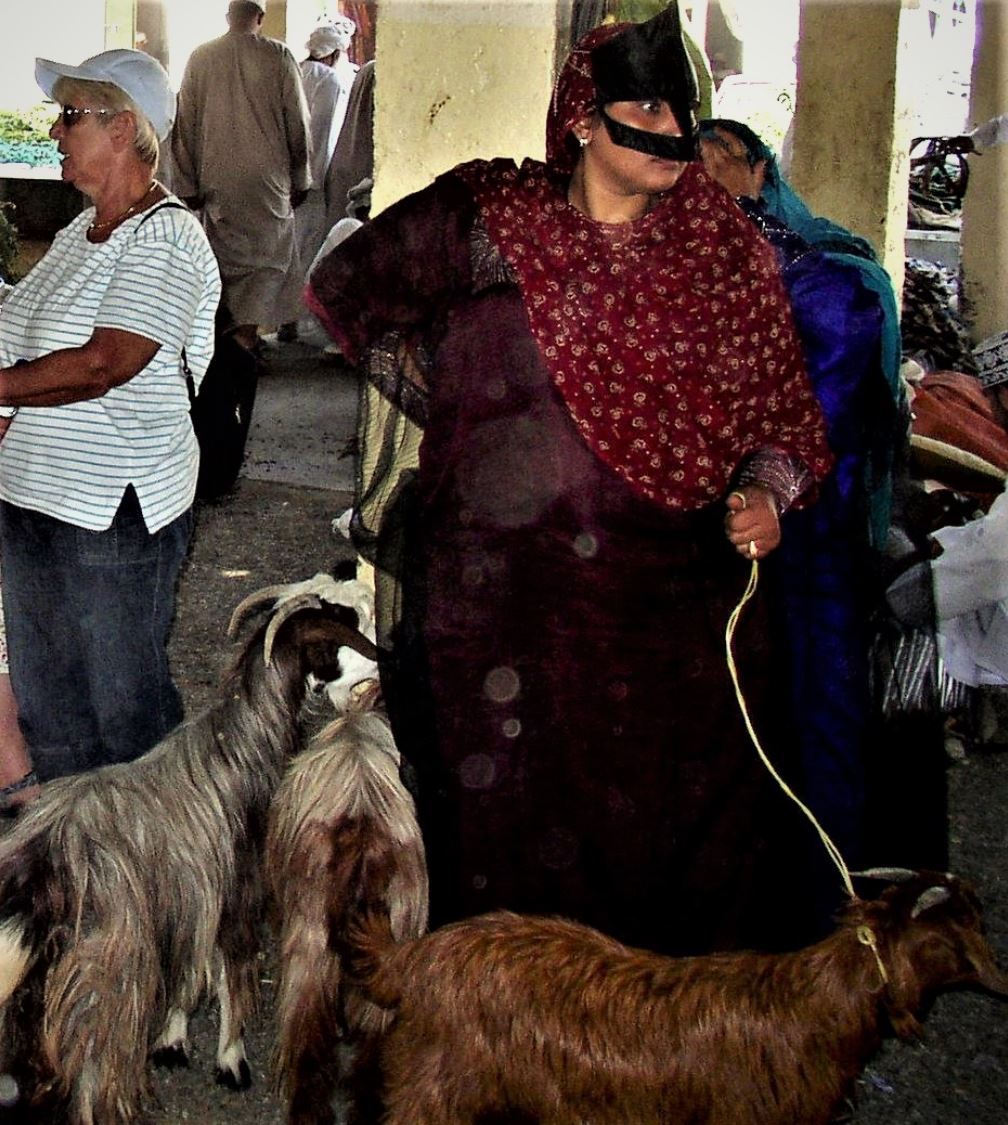
Sinaw Souq
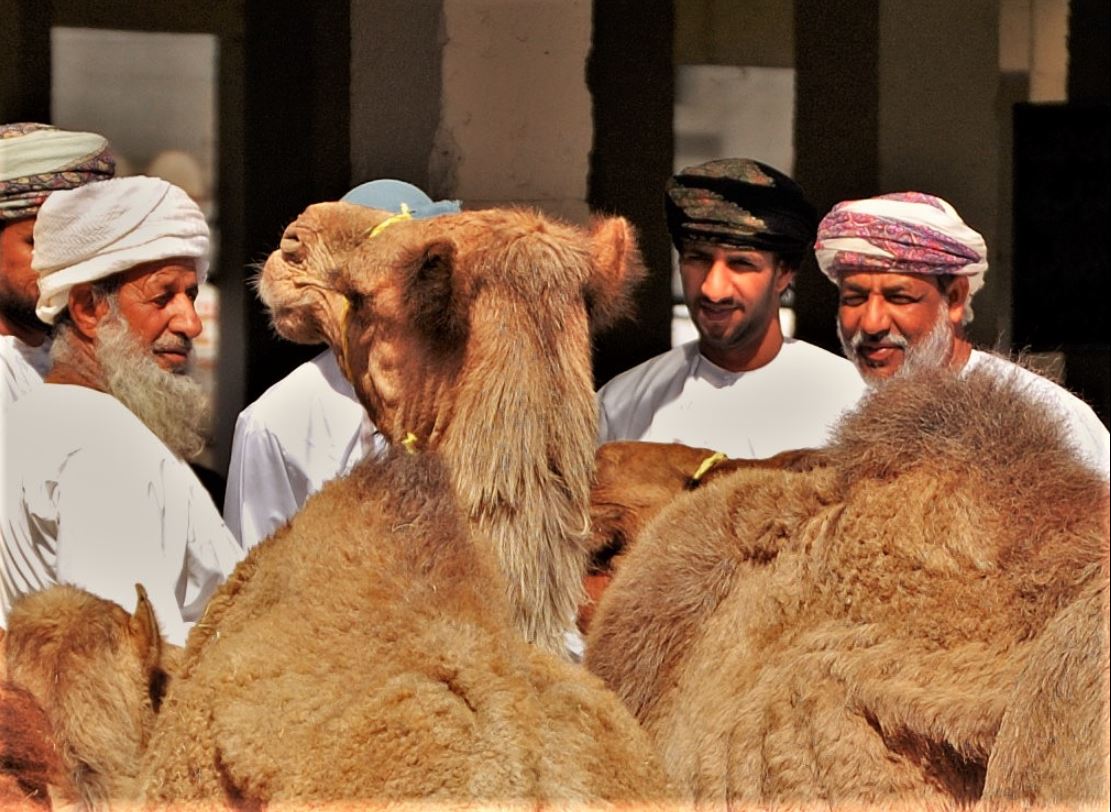
Sinaw Souq
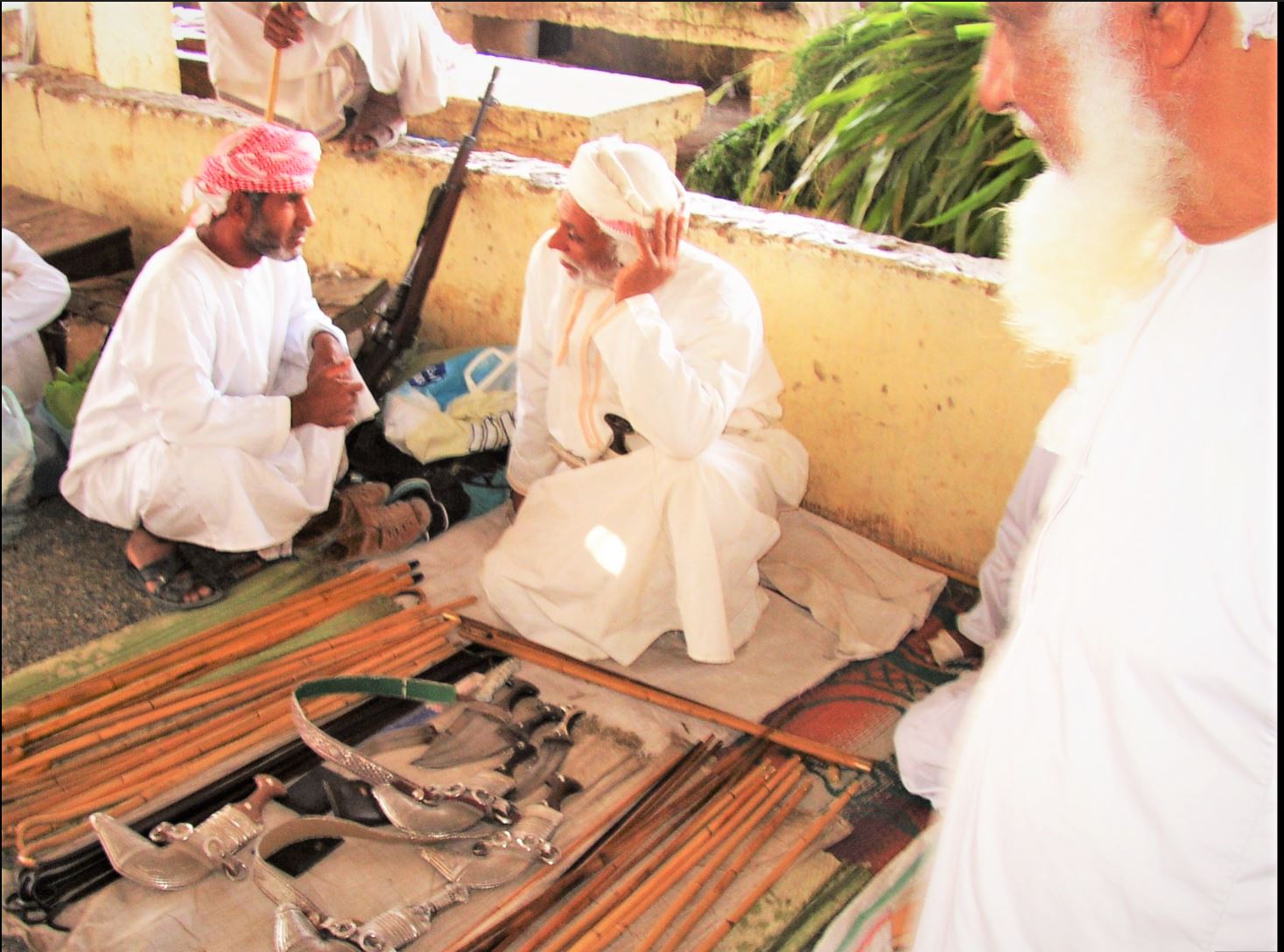
Sinaw Souq

Sinaw Souq
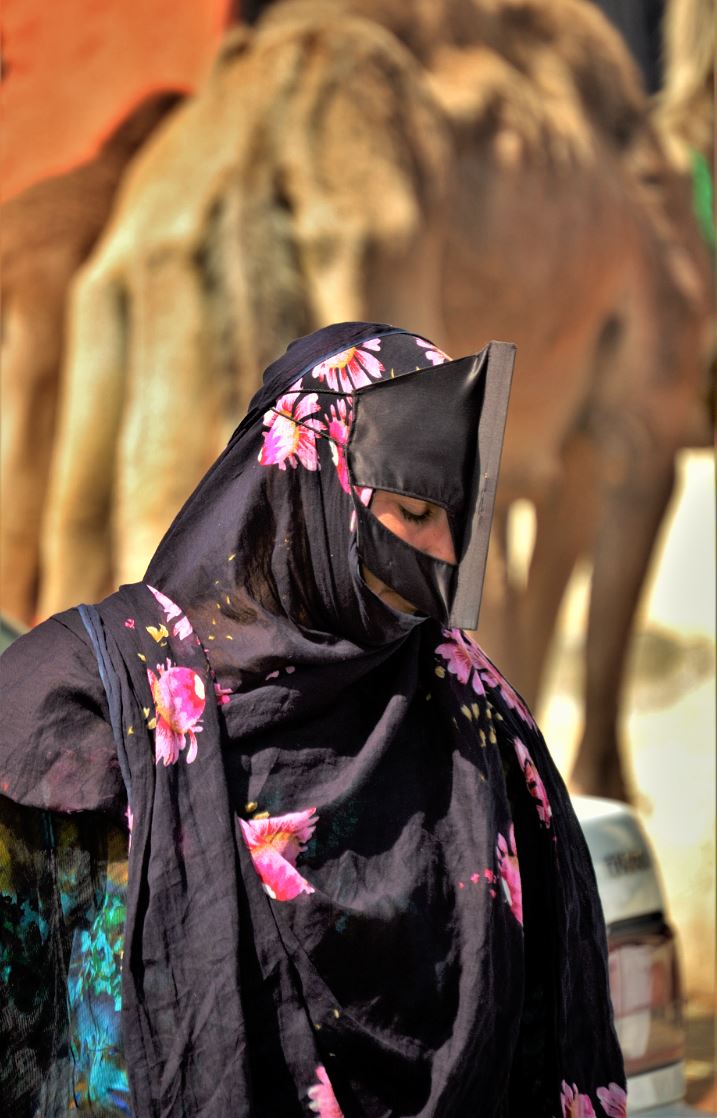
Sinaw Souq
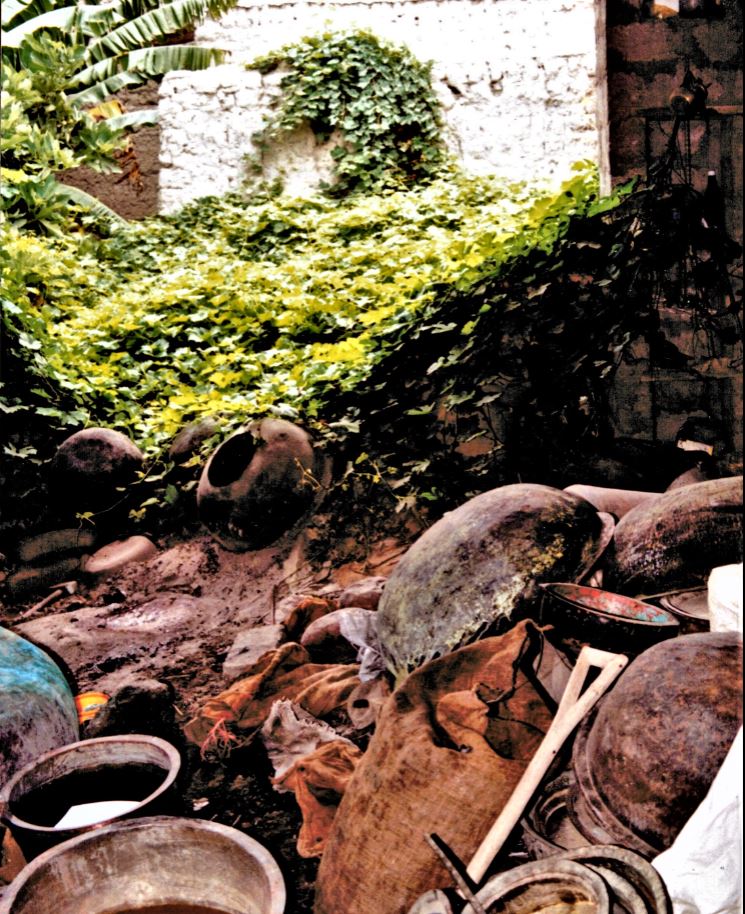
Nizwa old copper souq

Incense sold in the souq

Transport vehicle Sinaw Souq
REFERENCES
- "Oman-Holland A short history of the relations between the sultanate of Oman and the Netherlands" by Dr. B. Slot page 9. The Dutch visitor Padtbrugge writes in 1672 about the craftsmen in the souq in Muscat: "The trade and crafts are mostly practised by people from Sind and Banians (Hindus). prisoners form Diu (a Portugese colony in India) fill the gap left by local craftsmen. One finds however many Arabian rifle-makers and sword-cutters, and also anchor black-smiths and cannonball-blacksmiths, they forge those things because they do not know how to melt and cast iron(in Europe anchors and cannonballs were cast, not forged) The commodities they are used to make on a daily basis are well and neatly crafted by the coppersmiths. When the work is finished the hammer-strokes are not as visible as in our brass work. Our Dutch coppersmiths are amazed about that, but it is only a simple trick . During the glowing and the hammering they use red earth, which sticks very strongly to the brass. This makes the brass more flexible and also fills up the dents that have been caused by the hammer, some lumps remain which can also be equalized by hammer-strokes. We have ordered a good quantity of this red earth in Persia, so that it can also be tried once by our copper-smiths. It is already known to you how this red earth on leather changes dark red into a bright fresh red colour, how well fit it is for painting and how ell it dries...The coating with tin by use of sal-ammoniac is here just as usual as in Persia, because all their pots, saucers and table-dishes are made of brass. They can also turn clay quite well, because the beads of their rosaries (in reality the Arabian praying-string) which the Roman Catholics call paternosters, all must be turned, and those things are a prestige-object. The potters are very handy in glazing. They do not do this like us by stirring lead melted for a long time with an iron comb, but they drop melted lead in the water, fetch it out again and melt it anew and once again pour it in the water and repeat that. That has to be very slow work, but it saves the sifting of lead-ahes, because those disperse very finely in the water. Those ashes are then pounded fine and mixed with shifted charcoal. With this they glaze very handy the loam. This gives a red glazing as if it has been burned somewhat harder, and mixed with some smoke-black, black. Some brass mixed through gives a light or heavy green glazing"
- "Throw down the anchor. The Story of the Muttrah souq" by Maxine Burden 2014 . Is a very nice book with many illustrations that writes in particular about the people in the souq that often have been working there for generations.
- Mutrah souk by Amita Talwar in Tribute to Oman National day 1986 page 108-110
- "Arabistan the land of Arabian Nights" 1875 by the American tourist Fogg contains the "flamboyant" description of the Muscat souq by the Fogg

Antique auctioneer Muscat souq 1875 described by Fogg
.

Fogg's visit to the Muscat souq in 1875
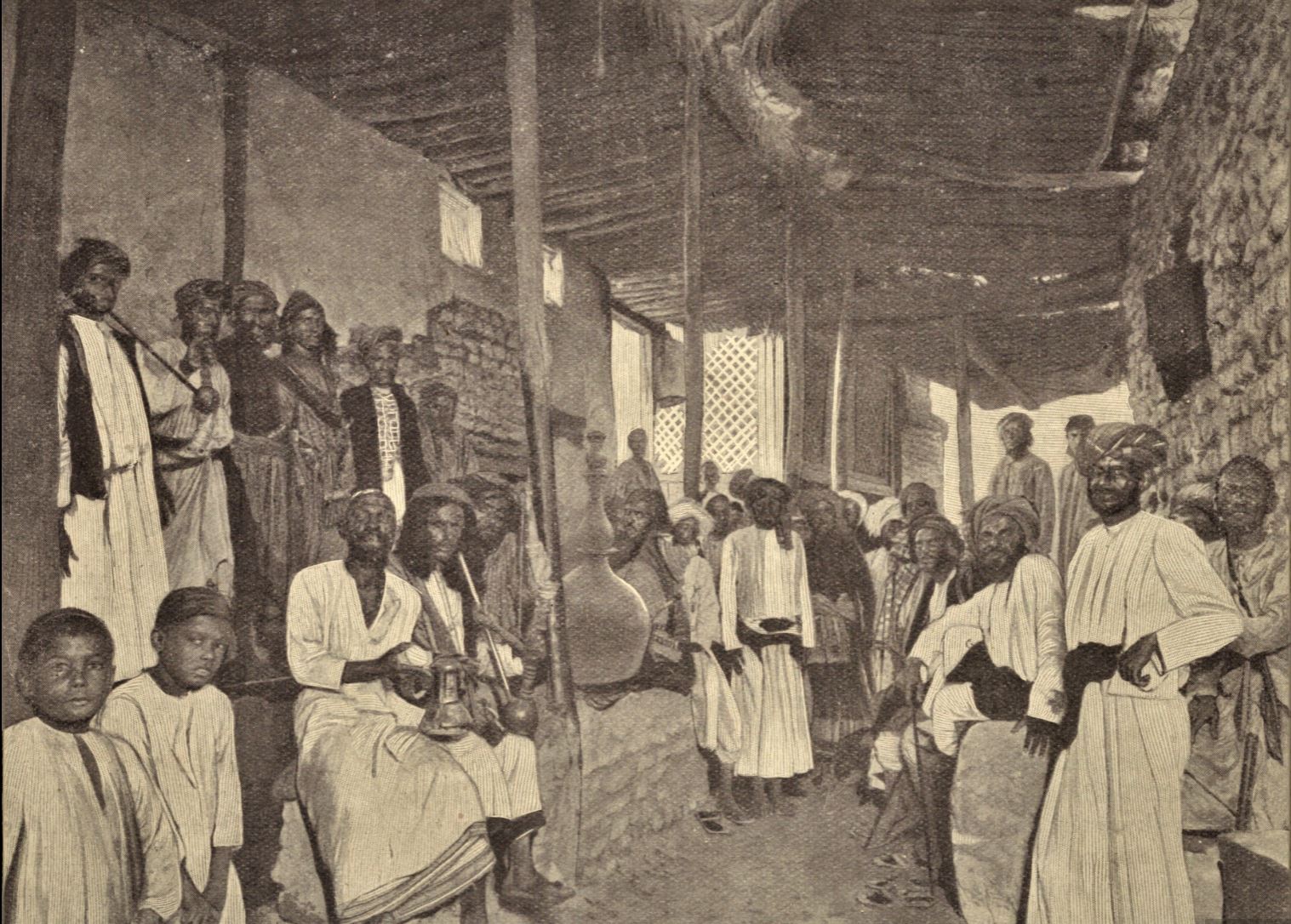
Muscat souq in 1898, illustration by Emile Allemann

Muscat souq around 1915, postcard image by Fernandez